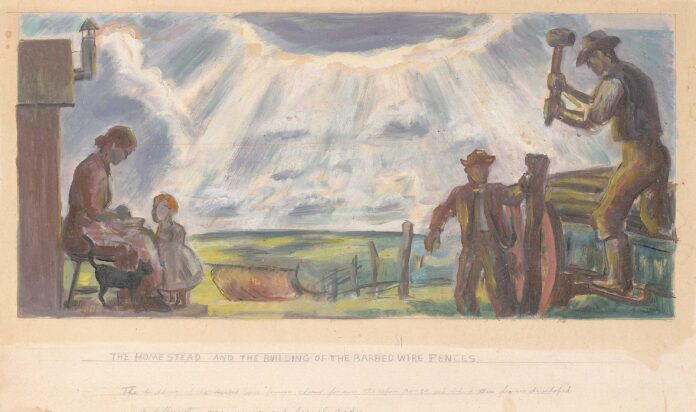
As a plein air artist, you are part of one of the largest art movements in history. Learn about those who have helped start this movement in some way, and be inspired to continue your own journey of landscape painting. For even more inspiration, subscribe to PleinAir® Magazine.
Our Plein Air Heritage
Born on a farm near Dunavant, Kansas, John Steuart Curry (1897–1946) believed that art should appeal to the common people. Rejecting both European academicism and modernism, he focused his work on familiar scenes of the American Midwest.
In this study for the second of two oil-and-tempera murals originally installed at the Department of the Interior building in Washington D.C., Curry capitalized on his standard palette — reds for Oklahoma’s dust and soil, gold for sunlight, and green for far-off fields of grain.
Of the scene, he said, “Building the barbed wire fences closed forever the open range, and behind these fences developed a different economic and social order.”
Storytelling landscapes like this one solidified Curry’s place alongside fellow masters Thomas Hart Benton (1889–1975) and Grant Wood (1891–1942) in the annals of American regionalist painting.
> Subscribe to Plein Air Today, a free newsletter for artists



